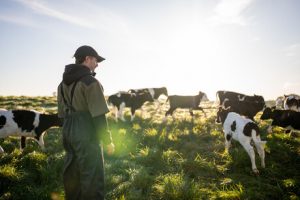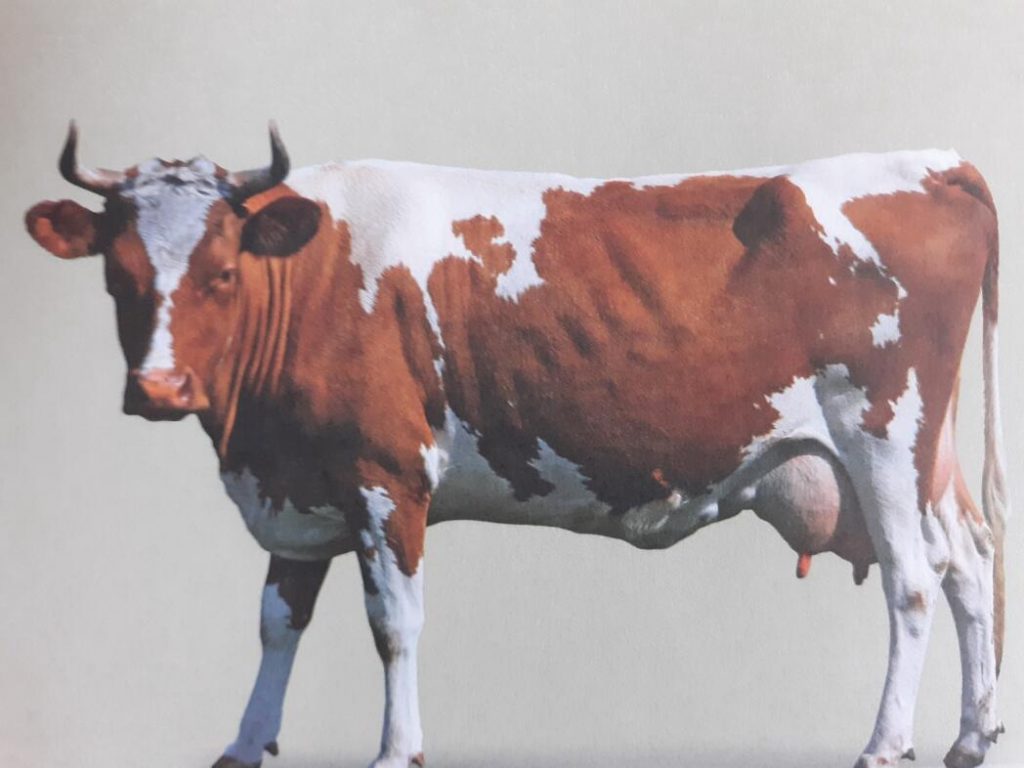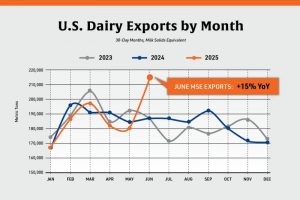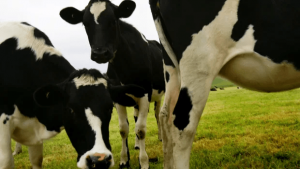
The month of February has Presidents Day and Valentine’s Day, but this year the month also marks the anniversary of something even more interesting.
It’s the 95th anniversary of Elm Farm Ollie, the first cow to fly. Yes, that’s right. It was on Feb. 18, 1930 that a 1,000 pound red, orange, and white Guernsey cow from Missouri stepped foot (or hoof) on a plane and became the first bovine to lift off the ground and defy gravity. The cow in Wizard of Oz didn’t fly around Auntie Em’s house until 1939.
So, yes, in 1930 when the International Air Expo was taking place in St. Louis, the local dairy industry was looking for a way to promote the consumption of milk. Aviation was becoming popular with larger, safer, aircraft when William Stout, a newspaper editor in Chicago, built and produced an airplane made out of corrugated aluminum that could carry a ton of cargo or passengers.
The design was reproduced by Henry Ford in mass numbers and proven efficient, so in advance of the Expo, dairy producers arranged with Sunnymeade Farms 75 miles south of St. Louis, to have its prized cow, Elm Farm Ollie, loaded on board a Tri-motor plane.
She was selected specifically because of her prolific production of milk (she was said to gross more than 30 quarts per day.) Someone to accompany her, so dairyman, Elsworth Bunce, was chosen to fly with her. He had proved especially adept at urging milk from cows at contests across the region, so was the obvious GOAT (no goat’s milk, just the go-to guy) for setting another record on the flight.
To assure that the first cow to fly received publicity, Bunce would accompany the cow and milk it along the way. If that wasn’t enough to get attention, when the plane arrived over St. Louis, small cartons filled with milk from the cow, would be attached to tiny parachutes, and dropped onto the wondering, and wandering, people below.
Arriving over St. Louis at 65 miles per hour (any slower and the plane would stall), Bunce rapidly pulled the teets of Ollie’s udder, filling one carton at a time, making sure the parachute was attached, and sending the airmail milk to people waiting below.
Circling around the Air Meet site and the city, Bunce kept milking and Ollie kept giving until twenty-four quarts had been squirted and delivered during the flight. Pasteurization wasn’t a big deal back then, so all those who received this manna, oops, I mean milk, from heaven, enjoyed a refreshing drink, (including Charles Lindbergh, who had been an airmail pilot at St. Louis and was attending the expo). There were no reports of injuries or deleterious effects from the milk drop.
As a promotion, by the time it was over, it was already making headlines across the country. Front page articles told the story of the Guernsey who gave her all for the people of St. Louis. Once the flight was done, Ollie returned to Bismarck where she lived to the age of 10 being able to blart that she held the record of being not only the first cow to fly, but the first cow to be milked while flying as well. Combined with Bunce as the first to milk a cow in flight, it was a trifecta of record setting.
That was 95 years ago. Fast forward into the late 20th century when Barry Levenson, the former Assistant Attorney General for the state of Wisconsin, founded the Mustard Museum in Mt. Horeb, Wisconsin.
Wanting to promote it, and with Wisconsin being the nation’s cheese state with nearly three billion pounds being churned each year, he started what has evolved into a revered annual tradition, Elm Farm Ollie Day.
Every week of Feb. 18, the museum, which displays more than 6,500 jars of different mustards from around the world, invites and welcomes guests to celebrate the bovine record setter’s achievement by serving cheese with your choice of mustard as a topping. Not just mustard, but mustards with such additional flavors as cranberry, ghost pepper and even beer.
The holiday has become so popular (and with mustard, cheese, and beer, how could it not?) Levenson had to relocate the museum to larger quarters by moving into a bigger spread in a historic stone landmark at Middleton, outside the capital city of Madison.
There, you’ll find the largest collection of mustards on Earth as well as some of the most beautiful and luxurious mustard jars and bowls ever created. You’ll also learn how it’s made, and its uses beyond eating (it’s apparently very therapeutic), and see varieties from 70 nations around the globe.
It’s an experience you’ll relish (oh, sorry, wrong condiment).
David V. Wendell is a Marion historian, author and special events coordinator specializing in American history.
You can now read the most important #news on #eDairyNews #Whatsapp channels!!!
🇺🇸 eDairy News INGLÊS: https://whatsapp.com/channel/0029VaKsjzGDTkJyIN6hcP1K




















